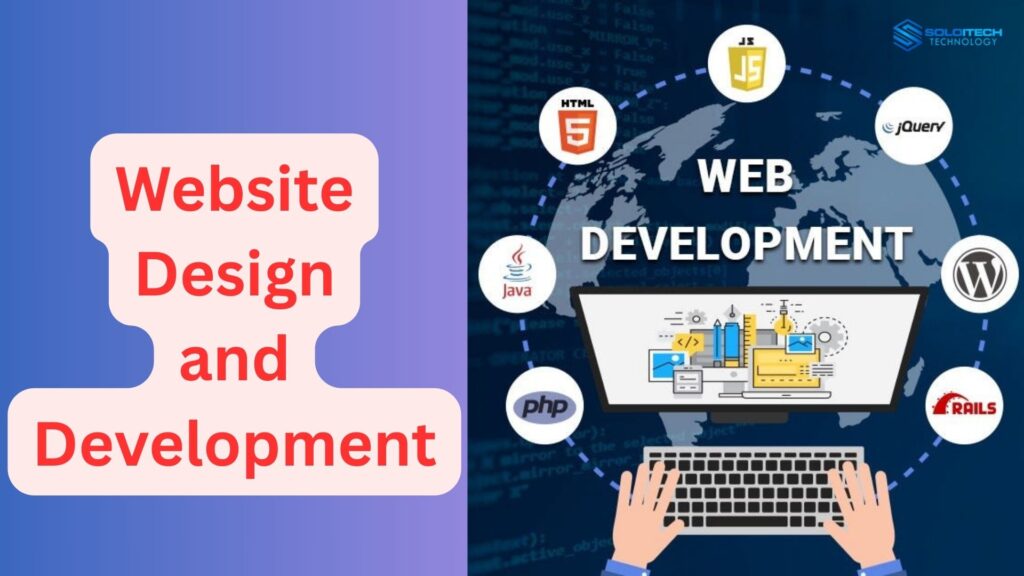In today’s digital world, every business, big or small, needs an online presence. And the base of that presence is a website. However, when we discuss building a website, two key terms emerge: web design and web development.
Web design isn’t just about colors and layouts anymore. In most cases, it means working with CMS platforms (Content Management Systems) like WordPress, Shopify, Wix, or Joomla. These CMS tools make it easier to create websites that are beautiful, functional, and easy to manage.
On the other hand, web development involves coding, customization, and building features that extend beyond what CMS platforms offer. Let’s break down the importance, key differences, and future scope of these two.
What is Web Design in Terms of CMS?
When we talk about web design today, we mean designing with CMS platforms. CMS based web design means:
- Choosing or customizing a theme/template
- Designing pages for user experience and branding
- Adding plugins and integrations for extra features
- Making sure the website is mobile-friendly and responsive
For example, a WordPress web designer would choose a professional theme, adjust the layout, change fonts and colors, and set up plugins like Yoast SEO or WooCommerce. On Shopify, a designer would customize the store’s look and add apps to improve the shopping experience.
In short, CMS web design is about creating beautiful and functional websites using ready-made tools. It’s not about writing code but more about visual customization and usability.
What is Web Development?
Web development goes deeper than CMS design. Developers create or modify code to build custom features, integrate databases, and ensure performance. They work with languages like:
- Front-End: HTML, CSS, JavaScript, React
- Back-End: PHP, Python, Node.js, MySQL
For example:
- A CMS designer can create a blog using WordPress.
- But a developer might build a custom plugin or add a feature that doesn’t exist in the default CMS.
In short, development handles the complex technical side that CMS design alone cannot achieve.
Key Differences Between CMS Design and Web Development
CMS web design uses platforms like WordPress, Shopify, Wix, Joomla, or Squarespace to build websites fast with pre-made themes and plugins. This requires CMS knowledge, UI/UX design skills, and plugin setup. It’s perfect for small projects, but flexibility is limited as customization is limited to what the CMS and plugins can do.
Web development uses custom coding with technologies like HTML, CSS, JavaScript, PHP, Python, and frameworks like React. This requires programming skills, database management, and server setup skills. Building from scratch takes more time but gives you complete flexibility and scalability to build exactly what you need for your business.
Why Web Design and Development are Important
Whether you’re using CMS design or custom development, both are crucial for building a successful website. Here’s why:
1. First Impressions Count
A CMS-designed website that looks modern creates trust instantly.
2. Easy Content Management
CMS web design makes it simple for non-technical users to update blogs, products, or services.
3. SEO-Friendly Structure
With the right plugins and development practices, your site can rank better on Google.
4. Scalability and Growth
CMS design helps small businesses start quickly, while web development ensures future scalability.
5. Brand Building
Both design and development reflect your brand identity and professionalism.
The Future Scope of Web Design and Development
The future is bright for both CMS design and development. Let’s see why:
1. Growth of CMS Platforms
WordPress alone powers over 40% of all websites worldwide. Shopify, Wix, and other CMS tools are growing rapidly, making CMS design skills valuable.
2. AI-Powered Website Builders
AI tools are helping non-designers create websites with drag-and-drop simplicity. But skilled designers will still be needed for customization.
3. Headless CMS Development
Future web development is moving towards headless CMS, where front-end and back-end are separate, offering faster performance and better scalability.
4. E-commerce Expansion
As online shopping grows, Shopify, WooCommerce, and Magento will dominate the CMS design world, while developers will focus on custom e-commerce solutions.
5. Security and Speed
Future websites will demand faster loading speeds and stronger security, a mix of CMS optimization and advanced coding.
Career Opportunities in CMS Design and Development
If you’re planning a career, both paths have amazing opportunities:
- CMS Web Designer: Specializes in WordPress, Shopify, Wix, etc.
- UI/UX Designer: Focuses on creating user-friendly interfaces.
- Front-End Developer: Converts designs into interactive websites.
- Back-End Developer: Manages servers, databases, and logic.
- Full-Stack Developer: Handles both front-end and back-end.
- E-commerce CMS Specialist: Focuses on platforms like Shopify and WooCommerce.
Demand is skyrocketing as businesses need CMS based sites fast and custom-coded solutions.
Conclusion
- CMS Web Design means building websites with WordPress, Shopify, or Wix. It’s fast, affordable, and beginner-friendly.
- Web Development means coding advanced features, custom solutions, and making websites scalable for future growth.
Both are important. CMS design gets businesses online fast, while development takes them further. As technology grows, the future is endless, from AI-powered design tools to advanced coding frameworks.

